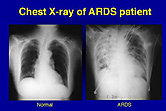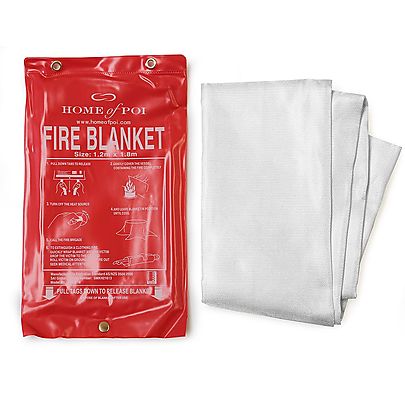Learn Fire training and safety - Clothing and Costume - Fire safe
Fire Training - Clothing and Costume - Fire safety
133,253 viewsHOP • Published on 18 Sep, 2007
This article should answer some of the questions about clothing worn by anyone using fire. This includes information for both performers, performance areas and safety crew.
Can my clothing burn?
Clothing can burn if it comes in contact with excessive heat (hot metal parts on a fire poi set) or the actual flame.
Can flame resistant clothing save me?
No it will not. As an electrician I have seen flame resistant barriers and flame resistant cables catch on fire and burn quite happily. This can also happen with flame retardant and flame resistant clothing. Flame resistant means it will be difficult to set on fire but it is possible, it also means it is likely to self-extinguish when the heat source is removed. Flame retardant is easier to set on fire compared to flame resistant, it should also self-extinguish without the heat source.
Why use flame resistant clothing?
Flame resistant clothing can on catching fire give the wearer extra time to remove the clothing or smother the flame. E.g. Dropping to ground and rolling over. Flammable clothing can however be given a flame resistant finish to minimize the risk of catching on fire and slowing the burning process.
What does the fire service use?
The fire service or other dangerous occupations wear expensive industrial flame resistant clothing. These are made from materials like glass, aramid, novoloid, sulfar, and saran. These materials are used in special weaves and combinations to reflect heat and be highly flame resistant. We use a particular weave of Kevlar ® wick (aramid) on fire poi as a medium to soak our fuel onto. The fuel will burn and the kevlar ® or kevlar ® / glass weave will not as long as fuel remains, although it will degrade over time. Kevlar ® on its own will not protect you from the heat.
What makes clothing burn faster?
Fabrics with loose weaves or worn loosely tend to catch fire more easily. This is because there is more oxygen around the fabric to aid the burning process. Fluffy or fuzzy clothes or clothes with dangly bits hanging off them also tend to catch on fire easily unlike smooth not fluffy clothes with no dangly bits. Denim with its heavy closely woven weave tends to burn slower.
What is safe?
Unless labeled as flame resistant or flame retardant all fabrics should be treated as highly flammable. Natural materials in tight weaves without fluff and the thicker the better will however give you more time to put out the flames and will provide you with better protection.
Wear tighter clothing which is less likely to catch against your fire poi or staff as it passes your body and will have less oxygen between them and your body.
When I say "better protection" I mean a few seconds like 3 to 4 sec at best. You clothes could catch on fire behind you and you could be unaware until it is too late. You must have a spotter or safety person watching over you at all times holding a fire blanket* , safer clothing will give them that extra time to put you out.
When smothering the flame be sure to cover the performer so as to push the flame away from and not into their face or air ways.
Once a flame gets hold it will grow extremely quickly even if you are wearing "safe clothing".
*Fire Authorities confirm that "Smooth filament fire blankets" are the best way to deal with human torch fires (i.e. when a persons clothing catches alight)
How can I protect myself further?
Spraying the material with water will remove air from between the weave and hence provide some additional protection.
What about my hair?
You should consider wetting your hair before performing or use a cotton scarf to cover hair.
Examples of different materials held against a flame
| Material | Time to burst into flame | NOTES (from U.S. Consumer Product Safety Commission, Flammable Fabrics Act) |
| Rayon | 3.0sec | Rayon and other cellulosic fibers (cotton,linen, rayon, lyocell, ramie) ignite easily, burn with a bright flame, smell like burning paper, and leave a white feathery ash. Weave density has a big impact on burning time. |
| Cotton | 4.8sec | Cotton and other cellulosic fibers (linen, rayon, lyocell, ramie) ignite easily, burn with a bright flame, smell like burning paper, and leave a white feathery ash. Weave density has a big impact on burning time. |
| Denim | 5.0sec | Denim is made from cotton in a twill weave. Because it is closely woven it will burn more slowly, but because of the quantity of material, they burn longer. |
| Silk | 7.6sec | Wool and silk (protein fibers) shrink from the flame, are hard to ignite, smell like burning meat or flesh, sputter as they burn and leave a crisp, foamy crushable residue. Although these fibers have natural flame retardance because they are difficult to ignite and burn slowly, fabrics of these fibers often burn easily because of an open fabric weave or knit and dyes or finishes present. |
| 50/50 Cotton/Polyester | 9.2sec | Blended fabrics -- cotton and polyester fibers together in one fabric, for example, combine to make a fabric that doesn't burn like either fiber. Blends sometimes are more dangerous than either individual fiber |
| Polyester* | 10sec | Polyester and nylon fibres may be slower to ignite, shrink and pull away from the flame source initially, but eventually will burn with a flame. As they burn, the melting residue holds heat and cools slowly to form a hard bead-like plastic melting residue holds heat and cools slowly to form a hard bead-like plastic residue. A chemical odor is given off. The melting residue is a very high temperature and can cause deep and severe skin burns. Acrylic fibers burn with a flaming, melting drip of molten material. All manufactured fibers burn at a high temperature and *can cause severe skin injury because they shrink as they burn and tend to stick to skin. |
Additional tests performed by Pele
We always say..."wear natural fibres and you won't get burned". Yup, that's what we say.
So I was thinking about this the other day and grabbed bunches of different kinds of fabrics, a candle and Whipping Boy and we headed onto my front porch. Then I found some others materials and continued the experiments...
Here is what we found when I held the fabrics directly over the flame, the equivalent to a move gone wrong....
- Lightweight Cotton/Gauze: up in flames in three seconds
- Middle Weight Cotton(like a cheap t-shirt, not really tightly woven): up in flames in 3seconds
- Tight Woven Cotton (a nice t-shirt): up in flames in 6 seconds BUT once it was up in flames it was hell to put out..it just kept going. At first is smoldered to a little brown mark so we thought it wasn't going to go, then it burst into flames, literally! We did this a few times just to make certain.
- Tight Woven Heavy Cotton (Like Khaki pants): left it there 10 seconds and it didn't go up in flames but after 10 it would've. That was the point at which the brown scorch mark was working through the material.
- Denim (without frays): held it there for 10 seconds (if you're safety hasn't put you out by then you have big problems anyway). It left little black soot marks that wiped off.
- Cotton Corduroy: Held it there 10 seconds. It scorched abit because of the loose fibers being raised up but once it made it past those it didn't go.
- Wool (Light grade, loose weave): 10 seconds until scorch, much like the tight weave cotton.
- Wool (heavy grade, like a blanket): Worked better than denim.
- Flax (it tends to be light and airy, like a cotton): 3 seconds and it was history.
- Silk (the shiny, light refined stuff): It lasted about 5 seconds before it frizzled into a tiny flame.
- Raw Silk (the course, heavier one): This held up to a count of 8 seconds before it smoldered fiber by fiber...but it never really went poof.
- Leather: It doesn't actually burn, it more curls up into this little black roll, and that was the edge of the light weight leather after about 20 seconds (I was really curious with this one). The center never went up.
Moral of the story is that not *all* natural fibers are acceptable to spin in. The lighter the fabric and the looser the weave, the faster it goes up.
Now, keep in mind that you have about a two to three second grace period before you even catch, and then you have the oh, about one second grace while the fuel residue burns off. After that it's all the fabric. So for all of you who are safeties, you should give no more than 3 seconds warning before you step in. Keep that in mind.
Safe spinning to all
 .
.Pele
Additional notes: References: U.S. Consumer Product Safety Commission, Flammable Fabrics Act
Last modified on 10 Nov, 2015

